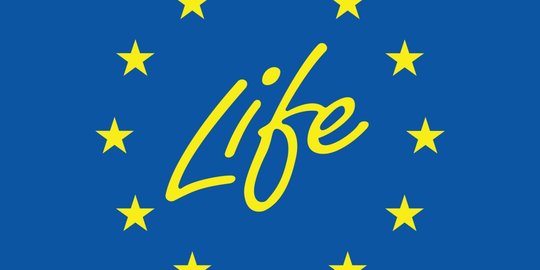SAP (Standard Action Projects) – projects of standard actions
The projects are aimed at:
- development, demonstration and promotion of innovative technical solutions, methods and approaches;
- creation of a knowledge base and application of best practices;
- maintaining the development, implementation, monitoring and compliance with relevant EU legislation and policy;
- implementation of successful technical and policy-related solutions for the implementation and adaptation of relevant EU legislation and policies.
Grant size: from €0.7 to €6 million.
Co-financing: up to 60% of the total costs of the project.
Implementation period: 3-5 years (maximum 10 years).
SNAP (Strategic Nature Projects) – strategic nature projects
The projects are aimed at:
- supporting the achievement of the EU's goals for nature protection and biodiversity;
- implementation of strategies, directives, plans adopted at international, national, regional or interregional levels by nature and biodiversity protection bodies;
- inclusion of relevant nature and biodiversity conservation objectives in other policies and funding programs.
Co-financing: up to 60% of the total costs of the project.
Implementation period: 6-10 years (maximum 14 years).
SIP (Strategic Integrated Projects) – strategic integrated projects
The projects are aimed at supporting the implementation of environmental and climate strategies or action plans on a national and regional scale.
Circular economy and quality of life projects:
- circular economy: national or regional action plans, strategies, road maps, etc.;
- waste management plans and waste prevention programs;
- river basin management plans; flood risk management plans; implementation of maritime strategy;
- air quality plans according to ambient air quality.
Climate change mitigation and adaptation projects:
- national energy and climate plans;
- national energy efficiency action plans;
- national or regional adaptation strategies or action plans;
- action plans in cities or communities, the transition to a climate-neutral and/or climate-resilient society;
- national, regional or sectoral strategies to reduce greenhouse gas emissions or economic roadmaps promoting climate neutrality.
The size of the grant: from €10 to €20 million.
Co-financing: up to 60% of the total costs of the project.
Implementation period: 6-10 years (maximum 14 years).
TA-PP (Technical Assistance Projects) – technical assistance projects
The specified projects support the development of capacity for participation in SAP projects, preparation of SNAP and SIP projects, preparation for access to other EU financial instruments or other measures necessary to increase or replicate the results of other projects financed by the LIFE Program, predecessor programs or other EU programs , in order to achieve the goals of the LIFE Program. Such projects can also be aimed at building the potential related to the activities of the authorities of the member states for effective participation in the LIFE Program.
Co-financing: up to 60% of the total costs of the project.
OA - CSA (LIFE Other Action Grants) - other actions
These projects are aimed at the "Transition to clean energy" through a comprehensive restructuring of all sectors of the economy with the aim of ending the use of fossil fuels and a full transition to carbon-free technologies and frugal energy consumption, and are focused on overcoming market barriers to the transition to clean energy.
The implementation of such projects involves the involvement of many interested parties and transnational consortia (minimum of 3 partners from 3 different countries, which are entitled to most of the funding streams).
Co-financing: up to 95% of the total costs of the project.

